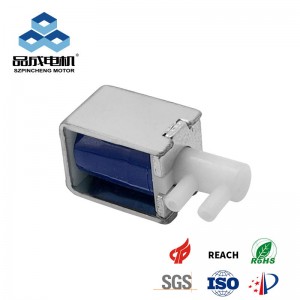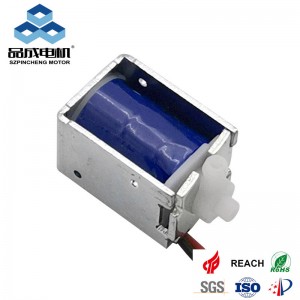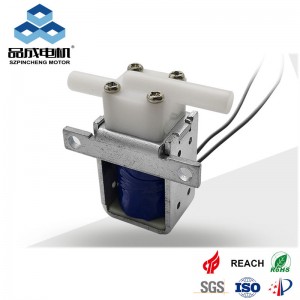Mini solenoid valves are indispensable components in applications ranging from medical devices to industrial automation, where precise fluid control and compact design are critical. The sealing structure of these valves plays a pivotal role in preventing leaks, ensuring longevity, and maintaining performance under varying pressures and temperatures. This article explores advanced sealing structure designs for mini solenoid valves, highlighting material innovations, geometric optimizations, and real-world applications.
1. Key Challenges in Mini Solenoid Valve Sealing
The miniaturization of solenoid valves introduces unique challenges for sealing:
-
Limited Space: Tight tolerances require precise alignment of sealing components.
-
High Cycle Demands: Medical or industrial valves may operate millions of cycles without failure.
-
Chemical Compatibility: Seals must resist degradation from aggressive fluids (e.g., solvents, fuels).
-
Temperature Extremes: Performance must remain stable from -40°C to +150°C.
2. Material Innovations for Enhanced Sealing
A. Elastomer Seals
-
FKM (Fluorocarbon): Excellent chemical resistance for fuels and oils; operates up to +200°C.
-
EPDM (Ethylene Propylene Diene Monomer): Ideal for water and steam applications; resistant to ozone and weathering.
-
Silicone: Flexible at low temperatures (-60°C) but limited in chemical resistance.
B. Non-Elastomeric Solutions
-
PTFE (Polytetrafluoroethylene): Nearly chemically inert, with low friction for dynamic seals.
-
PEEK (Polyether Ether Ketone): High strength and thermal stability for high-pressure systems.
-
Metal-to-Metal Seals: Stainless steel or titanium interfaces for ultra-high vacuum/pressure applications.
Case Study: A medical infusion pump using PTFE-coated seals achieved zero leaks over 500,000 cycles.
3. Geometric Optimization of Sealing Structures
A. Dynamic Seal Designs
-
O-Ring Grooves: Precision-machined grooves ensure uniform compression (20–30% squeeze ratio).
-
Lip Seals: Angled profiles reduce friction while maintaining sealing under pressure reversals.
-
Spring-Energized Seals: Incorporate helical springs to maintain contact force in extreme temperatures.
B. Static Seal Solutions
-
Flat Gaskets: Laser-cut PTFE or graphite sheets for flange connections.
-
Conical Seats: Metal-to-elastomer interfaces provide leak-free closure with minimal force.
Data Insight: A 5% reduction in seal cross-section decreased actuation force by 15%, enhancing efficiency.
4. Advanced Manufacturing Techniques
-
Mold Flow Analysis: Optimizes injection molding parameters for defect-free elastomer seals.
-
Surface Finishing: Polishing valve seats to Ra <0.2 μm minimizes wear on dynamic seals.
-
Additive Manufacturing: 3D-printed seals with gradient hardness for customized performance.
5. Testing and Validation Protocols
| Test Type | Standard | Key Metrics |
|---|---|---|
| Leak Rate | ISO 15848 | <1×10⁻⁶ mbar·L/s (helium leak test) |
| Cycle Life | ISO 19973 | >1 million cycles (medical-grade valves) |
| Thermal Shock | MIL-STD-810G | Performance after -40°C ↔ +120°C transitions |
6. Case Study: PinCheng Motor’s High-Performance Mini Solenoid Valve
PinCheng Motor has pioneered a mini solenoid valve series with a breakthrough sealing structure:
-
Dual-Layer Seal: Combines FKM for chemical resistance and PTFE for low friction.
-
Laser-Welded Housing: Eliminates gaskets, reducing potential leak paths.
-
Smart Actuation: PWM control minimizes heat generation, preserving seal integrity.
Results:
-
Leak Rate: <0.1 bubbles/min under 10 bar pressure.
-
Lifespan: 2 million cycles in automotive fuel systems.
7. Future Trends in Sealing Technology
-
Self-Healing Materials: Microcapsules release lubricants to repair seal wear.
-
Sensor-Integrated Seals: Real-time monitoring of compression and wear.
-
Eco-Friendly Elastomers: Bio-based FKM alternatives to reduce environmental impact.
Conclusion
The sealing structure of mini solenoid valves is a critical determinant of their reliability and efficiency. Innovations in materials, geometry, and manufacturing are enabling smaller, smarter valves that meet the demands of next-generation applications. By prioritizing precision engineering and rigorous testing, manufacturers can deliver solutions that excel in even the harshest environments.
Keywords: mini solenoid valve, sealing structure design, FKM seals, PTFE coatings, leak rate testing
Explore PinCheng Motor’s Innovations:
Visit PinCheng Motor to discover high-performance mini solenoid valves with advanced sealing technology.
you like also all
Post time: May-07-2025




